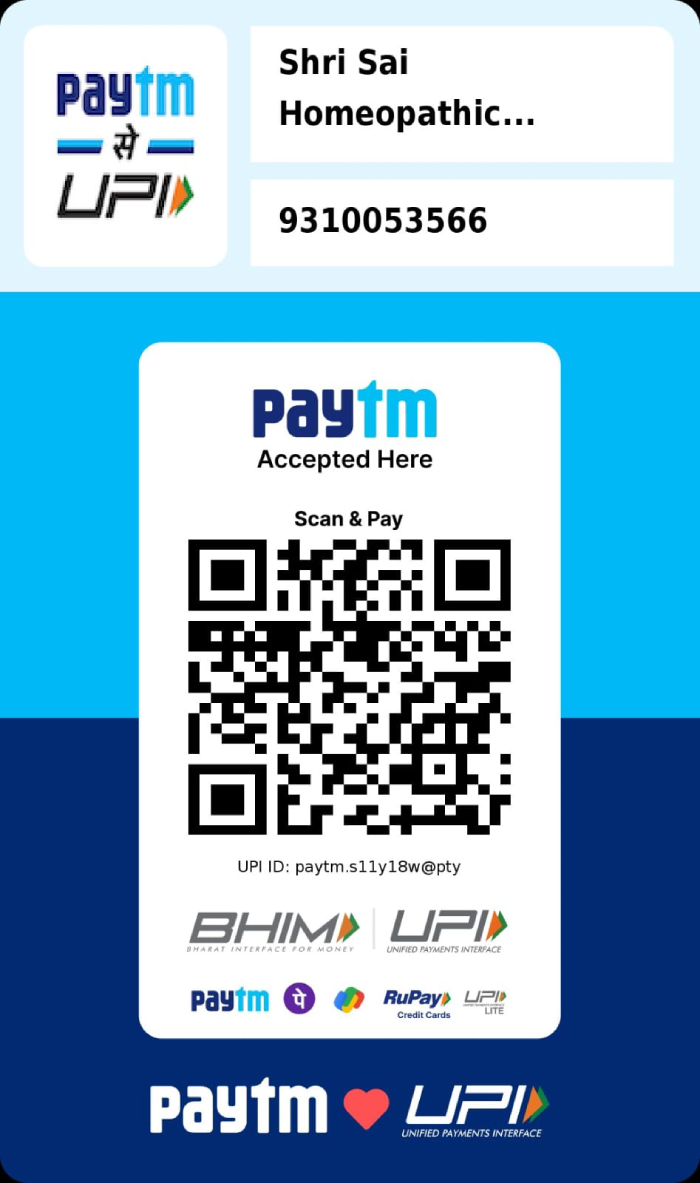- Customer Care +91 8800900271
- About Us
- Contact Us
- Sell Your Brand
- International Orders
- Disease
- Homoeopathy
- Willmar Schwabe Germany
- SBL
- REPL
- Dr. Reckeweg
- Willmar Schwabe India
- Bakson's
- Hapdco
- Lords
- Allen
- B Jain
- Adven
- Dr. Wellmans
- Indo German
- Medisynth
- Wheezal
- Adel
- HSL
- New Life
- Bioforce
- JVS
- Hahnemann Laboratory (HL) Calcutta
- Bios Laboratory (BL)
- Parul Homoeo Laboratories (PHL)
- Allen Calcutta
- Bhandari
- Dr. Bhargava
- PHBL
- SSL
- Dr Vijay's
- Natcure
- Kent Pharmaceuticals
- Similia
- Ralson
- St. George
- SHL
- Burnette's Homoeopathy
- Purusottam Homeo Bikas Laboratory (PHBL)
- Father Muller Pharmaceuicals
- National Homoeo Laboratory
- EL Dr. Lal Singh Expertise
- Dr Patel's
- Bangalore Bio-Plasgens (BBP)
- Boericke Research Laboratory (BRL)
- Ayurveda
- Unani
- Health & Fitness
- Books
- Veterinary
- Online Consultation
- International Orders


Stomach Pains: A new kind of Anxiety Attack: Dr Reckwege R5
.png)
- By: Dr Plakshi Ahuja
- Profession: BHMS, DNHE, MD (Scholar)
- Category: Homoeopathy
- Jan 06, 2022
Stomach is a pouch like organ, extending from lower end of oesophagus to the duodenum (pylorus). It stores the food for 2-4 hours where mechanical and chemical digestion takes place.
The stomach has 5 Anatomical Regions:
- Cardia is the oesophagogastric junction and lacks the sphincter.
- Fundus is the portion above the horizontal line drawn across the oesophagogastric junction.
- Body is the middle portion of the stomach between the fundus and the pyloric antrum.
- Pyloric Antrum is the distal third of the stomach.
- Pylorus is the junction of distal end of the stomach with the duodenum. It has powerful sphincter muscle.
The stomach Contain thick folds called rugae at its layer , for providing larger surface area for expansion, secretion, digestion and some absorption.
Gastric juice consists of hydrochloric acid, pepsin, mucin and electrolytes like Na+, K+, HCO-3 and Cl-. Hydrochloric acid is produced by the parietal (oxyntic) cells by the interaction of Cl- ions of the arterial blood with water and carbon dioxide in the presence of the enzyme, carbonic anhydrase.
Common stomach complaints:
- Dyspepsia: Dyspepsia also called indigestion may be caused by almost any condition that affects the stomach, It is not a disease but a symptom. common symptoms include Upper abdominal discomfort, described as burning sensation, bloating or gassiness, nausea or feeling full too quickly after starting to eat.
- Gastroesophageal reflux: Stomach contents, including acid, travels backwards up in the esophagus. There may be no symptoms, or reflux that may cause heartburn or coughing.
- Gastroesophageal reflux disease (GERD): Acid reflux and heartburn more than twice a week may indicate GERD. Infrequently, GERD can cause serious problems of the esophagus. Symptoms include burning pain in the chest that usually occurs after eating and worsens when lying down.
- Peptic ulcer disease: A peptic ulcer is a sore on the lining of your stomach, small intestine or esophagus. A peptic ulcer in the stomach is called a gastric ulcer. A duodenal ulcer is a peptic ulcer that develops in the first part of the small intestine (duodenum). An esophageal ulcer occurs in the lower part of your esophagus.
- Gastric ulcer (stomach ulcer): An erosion in the lining of the stomach, often causing pain and/or bleeding. Gastric ulcers are most often caused by NSAIDs or H. pylori infection.
- Gastritis: Inflammation of the stomach, causing belly pain, indigestion (dyspepsia), bloating and nausea, pain. Gastritis can be caused by alcohol, certain medications, H. pylori infection, or other factors.
- Zollinger-Ellison syndrome (ZES): One or more tumors that secrete hormones that lead to increased acid production. Severe GERD and peptic ulcer disease result from this rare disorder.
- Gastric varices: In people with severe liver disease, veins in the stomach may swell and bulge under increased pressure. Called varices, these veins are at high risk for bleeding, although less so than esophageal varices are.
- Stomach bleeding: Gastritis, ulcers, or gastric cancers may bleed. Blood or black material in vomit or stool is usually a medical emergency.
- Gastroparesis (delayed gastric emptying): Means partial paralysis of the stomach, it is a disease in which the stomach cannot empty itself of food in a normal way. The Nerve damage from diabetes or other conditions may impair the stomach’s muscle contractions. Nausea, vomiting, feeling of fullness after eating are the usual symptoms.
Dr. Reckeweg R5
Acts on the inflamed mucosa of stomach, on the physiology of stomach. It helps to Relieve Burning pain in stomach, vomiting, acidity, gas troubles
Dr. Reckeweg R5 is Used especially for:
- Especially ulcus parapyloricum
- Acute and chronic gastritis
- Dyspepsia
- Chronic relapsing gastritis with or without ulceration
- Heartburn
- Acid reflux, Bad taste in mouth
- Frequent belching
- Flatulence
- Meteorism
- Gastro-duodenitis
Mode of action of individual ingredients in Dr. Reckeweg R5
-
Anacardium: Gastric complaints, improving after eating, pains around midnight. Weak digestion, with fullness and distention. Empty feeling in stomach. Eructation, nausea, vomiting. Apt to choke when eating or drinking. Swallows food and drinks hastily.
-
Argentum nitricum: Epigastric complaints, noisy and frequent belching with temporary improvement. Gastralgia, esp. in delicate, nervous women; brought on by any emotion, loss of sleep, or at menstrual period. Nausea, retching, vomiting of glairy mucus. Flatulence
-
Arsenicum album: Remedy for mucous membrane, burning pain in the stomach with vomiting Excessive pains in the abdomen, principally on the left side, and often with great anguish in the abdomen. Regurgitation of acrid matter, or of bitter greenish mucus.Frequent and convulsive hiccoughs, principally in the night.Frequent and excessive nausea, sometimes rising even to the throat, with inclination to vomit, necessity for lying down, sleep, swooning, trembling, shuddering, or heat, pains in the feet. Flow of water from the stomach, like water-brash.
-
Carbo vegetabilis: Sensation of repletion in abdominal cavity, asthenia and exhaustion. Cramps in the stomach, contractive, or pressive and burning, with accumulation of flatus, and great sensitiveness of the epigastrium. Pressure at the pit of the stomach, as if the heart were going to be crushed, esp. in suckling women.
-
Chamomilla: Nervous hypersensitivity and irritability. Swelling of the stomach. Acid rising (the existing pain is aggravated by eructations). Pressive gastralgia, as from a stone on the stomach, with difficulty of respiration, chiefly after eating, or at night, with inquietude and tossing, either renewed or mitigated by coffee.
-
Chelidonium: Effective for liver and bile, choleretic, improvement of gastric disorder by ingestion. Gnawing in stomach relieved by eating.-Sensation of coldness in stomach.Cutting pain in stomach when yawning; soon after eating.
-
Lycopodium: Gastro-intestinal disturbances, bitter taste in mouth, lack of appetite, constipation, flatulent colic. Sour eructations, the taste of which does not remain in mouth, but the acid gnaws in the stomach. Dyspepsia with loud croaking in the abdomen.-Affections of the inner lower belly. Full, distended abdomen with cold feet.
-
Nux vomica: Nervous irritability, hypochondria, stomach constriction, disturbances due to nicotin. Flatulent distension, with spasmodic colic. Colic from uncovering. Liver engorged, with stitches and soreness. Colic, with upward pressure, causing short breath, and desire for stool.
-
Scrophularia nodosa: Griping pains in abdomen, hyperacidity improving after eating. Pain in right hypochondrium, < deep inspiration or lying right side. Cutting in liver on pressure.Twisting-pinching pain in umbilicus. Colic just below navel and some griping in the side in afternoon.
Get the Latest Updates Blog
 Click here to Pay
Click here to Pay

Please send the screenshot at 880 090 0271

